Autumn anemone - varieties, cultivation and use on the site
Many gardeners, having heard the original name of a flower, tend to plant it on their site. This is the case with the autumn anemone. This flower does not riot with colors during the summer, its buds open after all the bright shades of the summer months have faded.
It is at this moment that the garden begins to shine with rich tones of bright anemones... For lovers of autumn flowers, it is recommended that before planting, familiarize yourself with the varieties of an excellent representative of the flora and find out not only the rules of planting and care, but also the methods of reproduction.
Content:
- The best varieties and their features
- Reproduction methods
- Landing dates and rules
- Care advice
- Diseases and pests, the fight against them
- Application of colors in the design of the site
The best varieties and their features
Anemone is popularly called the anemone, she was nicknamed the daughter of the winds. The plant received such a nickname due to the fact that at the slightest breath of wind, delicate petals begin to sway. The flower is a representative of the Buttercup lineage. A herbaceous shrub is a plant that can live for more than one year.
In wildlife, the plant is found everywhere, but prefers to live in forests with moderate climatic conditions. Anemone grows in most cases in the plains and in mountainous regions.
In total, there are about 160 varieties of anemones.
All species bloom at different times and have excellent color shades. Varieties are divided into spring and autumn. The autumn anemone group includes the following varieties:
- Grape-leaved - its first appearance was recorded in the Himalayas at an altitude of more than 3000 m.For its cultivation, a moist sandy soil should be selected. Deciduous plates vaguely resemble grape foliage - they have five-lobed cavities. The buds are very modest - a pale white hue, in some cases a slight glow may appear in the form of a pink tint. Anemone can reach 1 m in height, while each leaf of the shrub grows up to 20 cm in length. Anemone of this type is rarely used for growing in personal plots. But it is used to create a decorative gazebo or shed, as well as in the selection of hybrid plants.
- Hubei is a tall anemone, stretching up to 1.5 m in height. It has large leaves, dark green in color. There are more buds, but they are much smaller than those of other varieties. The flowering of the first buds occurs in the last days of the outgoing August or in the first days of September. The tone of the flowers is snow-white or with a pink tint, especially around the edges of the petals. The following plant varieties are part of the Hubei anemones: Tiki Sensation, Precox, Crispa, Slendens.
- Felt - in living nature it stretches up to 1.2 m. The buds bloom in the last week of summer or in early autumn. In the southern regions of the country, this type of anemone is not grown. It is more suitable for cold-resistant climates and harsh living conditions. The flowers of the plant are few, but have a light pink tint.Deciduous plates are distinguished by a pale green tone, on the underside they are slightly pubescent with delicate villi. Most often of all varieties in home cultivation, the Robutissima variety is found.
- Japanese - it is believed that the plant came to China in the distant 600-900 years, during the reign of the Tang dynasty. Anemone is a herbaceous perennial, with creeping rhizomes, which are located on the surface of the earth. On average, the shrub reaches 80-85 cm in height, but in some cases, under favorable conditions, it stretches up to 130 cm. The leaf blades of the variety, three times dissected, vaguely resemble a maple leaf. They are pinnate, with toothed-type segments. They have a green tone with a grayish tint. In some varieties, breeders have achieved a bluish foliage. Anemone flowers are simple, gather in a bunch at the ends of long arrows. The stems of the bush are branching, so the bush is simply strewn with delicate flowers. Buds in natural conditions are white or with a pink tone. The opening of the inflorescences occurs in early autumn. Varietal varieties can differ in the double flower shape. The varieties of Japanese anemones include the following types: Prince Henry, Queen Charlotte, September Charm, Whirlwind, Pamina.
- Hybrid variety - is a hybrid of all previously identified anemones. Deciduous shrubs rarely grow more than 40 cm above the ground. While the peduncles rise to a meter height. During flowering, the buds form as the previous ones bloom, due to this, the impression of a continuous long riot of delicate shades is formed. The main varieties of hybrid varieties include: Lorelei, Serenada, Lady Maria, Andrea Atkinson.
All these varieties are both similar to each other and have significant differences. Therefore, before purchasing a variety, it is worth looking at other varieties.
Reproduction methods
Reproduction of a beautiful delicate flower occurs in various ways:
- It can be obtained using seeds. But the planting material germinates for a long time and badly. The collected seedlings of the plant do not differ in an increased level of germination. Therefore, it is not possible to obtain a varietal identity from them. In addition, when collecting seeds from the mother bush, there is no exact certainty that the sprouted shoots have inherited the mother's qualities.
- Another way to obtain an original plant is the division of the bush by rhizomes. The procedure is carried out at the onset of warm days, in early spring. The event should be carried out before the blooming of the first sheet plates. Reproduction in this way is required to be done no more than 1 time in 4-5 years. The bushes are carefully removed from the soil, divided into parts so that at least 1 growth point remains on each. The resulting parts are planted in the ground. At first glance, this method seems easy, but it has its own difficulties in implementation. Anemone roots are very fragile and brittle. Therefore, during division, the rhizomes break, injured. After transplanting, the plant is restored for a long period: the shrub slows down its growth, focuses on the problem.
- There is another method that is less traumatic for the plant. Due to the fact that the rhizomes creep along the ground, they release new growth points. If you fill up the earth under such a bush, which connects to the mother's rhizomes. In the spring, chop off the joint with a sharp movement of the shovel, then you can get a completely identical shrub with a full set of maternal qualities.
Landing dates and rules
For beginner gardeners, growing a capricious anemones hardly an easy task. If you have a seedling ready for planting on your hands, you should first find the optimal place for it.It is recommended to select such areas for planting a delicate plant so that the place is protected from piercing winds, drafts and excessive sunlight with an openwork crown of trees. Also, areas located on the southern side of buildings are suitable for shelter, fences are excellent for this purpose. Autumn anemone does not tolerate the bright sun, it needs partial shade. Therefore, such living conditions are ideal for a capricious person.
Loose, moist soil is best suited for planting.
It is desirable that it be fertile, rich in nutrients. Sandy soils are contraindicated for anemones. She also does not like the neighborhood of powerful fruit trees with strong roots. In such conditions, the shrub will grow, but it will not bloom, no matter what conditions are created for it. The best option for rooting is loam with peat or deciduous soil substrate. If the soil does not meet the requirement of looseness, then river sand is introduced into it.
Usually, planting material is buried in the spring, but sometimes planting can be postponed to the autumn months. All garbage is removed from the selected place, all weeds are dug out. The soil should be dug up and the plant should be added in advance compost, humus and manure. If the acidity of the soil is not suitable for planting anemones, then it is recommended to additionally add lime, dolomite flour or ash.
If seeds are planted, then it should be remembered that only a certain part will be able to germinate. Therefore, it is recommended to plant a large amount of planting material. Before planting on the territory, the seedlings are placed in a cold place, for example, in a refrigerator. The procedure is performed to enhance seed immunity and better germination. For this, the seeds are combined with peat or coarse sand. Periodically, the substrate is sprayed with water to moisturize.
After the plant releases the first leaves, the planting material is taken out into the streets and buried in the ground, falling asleep from above sawdust or dry straw. When growing tubers, anemones are initially awakened from sleep - they are laid out in a container with warm water for swelling. After they need to be planted in small pots for germination. In such conditions, they are periodically watered so that the soil does not dry out. After the first leaves appear on the tubers, they are transplanted into open ground.
Care advice
Unlike the landing of a capricious lady, keeping her outdoors is very simple:
- It is important for the shrub to provide the soil substrate with the necessary amount of nutrient moisture, which must be maintained throughout the growing season. In this case, the introduction of irrigation into the soil should be controlled. If the soil is excessively moistened and looks like a swamp, then the rhizomes may begin to rot, which will provoke the death of the entire shrub of delicate flowers. Otherwise, if there is not enough moisture and the soil is constantly dry, this will also negatively affect the general appearance of the plant. During the period of formation, the buds will not be able to fully form and in most cases will dry out before blooming and fall off. To adhere to the optimal moisture content, it is better to plant the plant on a hill. In addition, the circle of earth under the foliage of the plant should be covered with mulch. This will allow moisture to evaporate from the soil longer. In the spring, watering is carried out no more than once a week. If the summer turned out to be cold and rainy, then additional nutrient moisture should not be applied. If the summer months are characterized by an increased air temperature and a lack of rain, then watering is carried out daily in the morning or in the evening, when the rays of the sun do not touch the delicate leaf plates.
- Top dressing for the plant is mandatory during the flowering period. For this it is worth using organic fertilizers... The only exception is fresh cow dung - it will burn both foliage and root systemdestroying the plant. In the autumn months, after the end of budding, the shrub can be fed with complex fertilizers. If all the required nutrients are added during planting, then additional feeding will not be required during the growing season. In addition, it is required to periodically remove weeds from under the foliage and loosen the soil. This will allow better penetration of nutrient moisture and oxygen to the rhizomes, which will provoke rapid growth.
- If the anemone is grown in mid-latitudes or in the northern regions of Russia, then for the winter period the plant should be dug out of the open ground and prepared for winter. The tubers are dried, the entire aerial part is removed from them. After they are buried in dry river sand or peat, they are removed in a dark, cool room. For such purposes, it is possible to use a refrigerator or a non-damp basement. In the southern regions, where low temperatures are practically not detected, the plant can be left in the soil. But for wintering, the islet of rhizomes should be covered with crushed dry peat, and on top it should be covered with fallen dry leaves or pine needles. Such actions will help preserve the plant if slight frosts occur.
Diseases and pests, the fight against them
In most cases, the anemone does not contract diseases. But with improper care, it is possible to provoke the development of the following pathogenic bacteria:
- Anthracnose - a fungal infection, leads to a slowdown in growth, curliness of the leaf plates. Young shoots appear ugly, twisted. The growth of anemones in such a situation is darkened, flimsy. To prevent the appearance, it is recommended to periodically control the emerging leaves. If the first signs of malaise are detected, immediately resort to the effects of chemicals (Euparen or Cumulus).
- Gray mold - infected leaf blades and other areas become soft, watery to the touch. Due to the increased humidity of the air, gray rot is formed on the foliage. Diseases appear - in autumn or spring, when the climate changes from warm to cold and vice versa.
- Downy mildew - white bloom forms on the surface of the leaf plates. If you turn the leaf over, then a gray rim of fungal spores will be present in the same place. As a preventive measure, when growing seedlings in a greenhouse, it is necessary to monitor the humidity of the air, spray the plant less. Diseased plants are removed, and the rest are irrigated with chemicals to prevent infection.
Most often, such parasitic insects like to settle on a plant aphid, thrips, nematodes, South American leaf miner and whitefly. If an insignificant number of parasitic individuals are detected, it is more expedient to remove them manually. But when an increased population is found, chemical exposure is indispensable.
To prevent diseases from developing on leaf plates, and pests not to infect the shrub, it is necessary to constantly monitor the gentle pet. If the first signs of a disease or an invasion of parasites are detected, it is worth immediately applying therapeutic actions, and not waiting for the development of events.
Application of colors in the design of the site
Anemone is planted in the garden not only as a blooming plant when all other plants have stopped forming buds, but also as a background shrub for low-growing summer plants. The bush looks great as a monoculture, planted in a flowerbed in a single form or as an addition to mixborders... If you use a flower in autumn flower beds, then the anemone looks great with large balls of pink hydrangea, aster, astilboy and even aconite.
But when choosing a site for planting anemones, one should take into account its ability to quickly spread over large areas.If the site allows, then you can allow the shrubs to form impassable thickets. They can become a kind of highlight of the landscape.
If you plant an anemone, then trees such as barberry, maple or Rowan... But planting should be done at a distance so that crops do not block the plant from the sun's rays necessary for flowering.
Thus, the autumn anemone has a variety of varieties, of which there are a huge number in nature.
But for planting, you should choose a specific place, pick up neighbors and, most importantly, carry out the necessary care. The main problem with the maintenance of shrubs is watering. It is worth choosing the optimal amount and frequency of application of nutrient moisture so that the plant does not rot.
More information can be found in the video:



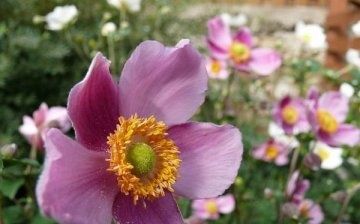
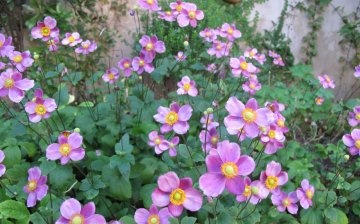

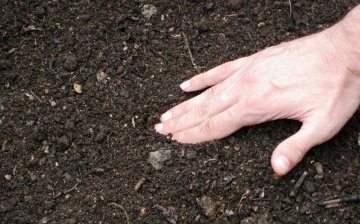
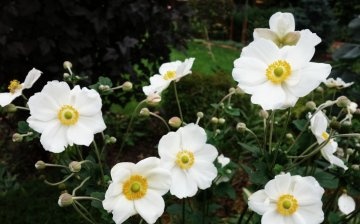
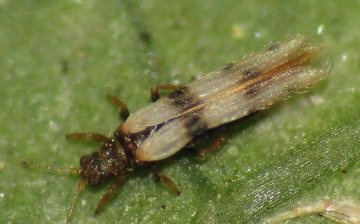
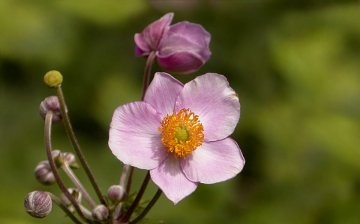







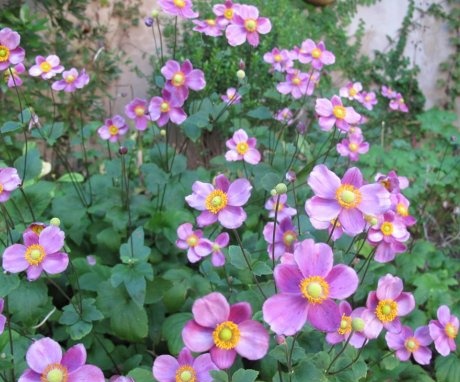


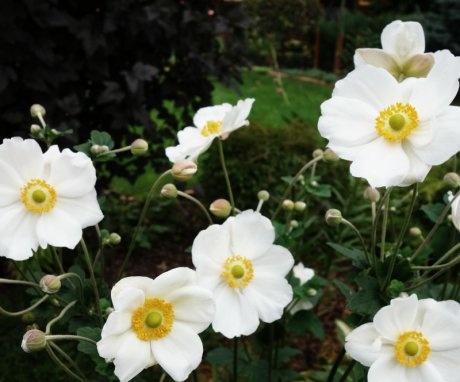
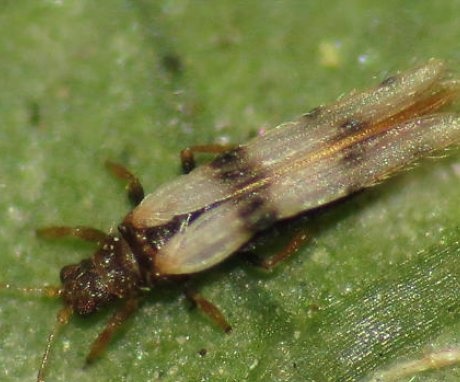
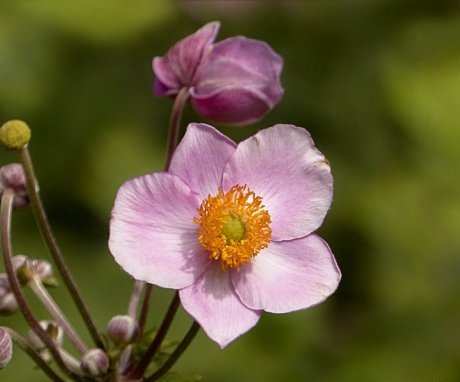
I think that in the fall, a summer cottage with bright anemone flowers will not leave anyone indifferent. I like the fact that the plant shares rhizomes and easily takes root in a new place. Yes, and abundant watering is not required, and in the fall it is not needed at all, since there is enough rain.